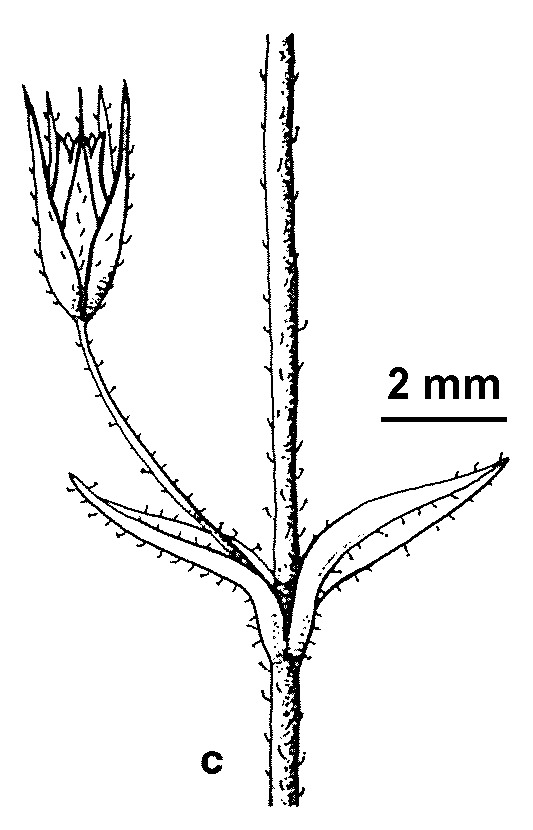Arenaria leptoclados
(Rchb.) Guss. Lesser Thyme-leaved SandwortAnnual with slender, branching taproot, minutely scabrous, often glandular-hairy above. Stems diffusely branched, lax or erect, 2–30 cm long. Basal leaves with petioles 1–2 mm long, cauline leaves sessile; lamina 1-veined, ciliate, 2–5 mm long, 2–2.5 mm wide. Inflorescence usually diffuse; bracts herbaceous. Flowers 3–5 mm diam.; pedicels 2–6 mm long, minutely scabrous, often glandular, more or less curved in fruit; calyx scabrous, sparsely glandular-puberulent, sepals lanceolate, acuminate, 3-veined, the inner with scarious margin, 2–3 mm long; petals white, ovate, half length of sepals. Capsule more or less conical above, thin-walled, 3–4 mm long, 1.2–1.4 mm diam; seeds black or dark red, more or less sharply tuberculate, 0.3–0.4 mm long. Flowers Oct.–Feb.
GleP, Brid, VRiv, GipP, OtP, CVU, NIS, EGU, WPro, HNF, VAlp. Also naturalised WA, SA, NSW, Tas. Native to Europe, western Asia. A common weed of disturbed, often sandy soils and rocky sites.
See note under A. serpyllifolia.
Adams, L.G. (1996). Caryophyllaceae. In: Walsh, N.G.; Entwisle, T.J., Flora of Victoria Vol. 3, Dicotyledons Winteraceae to Myrtaceae, pp. 228–271. Inkata Press, Melbourne.
 Spinning
Spinning



